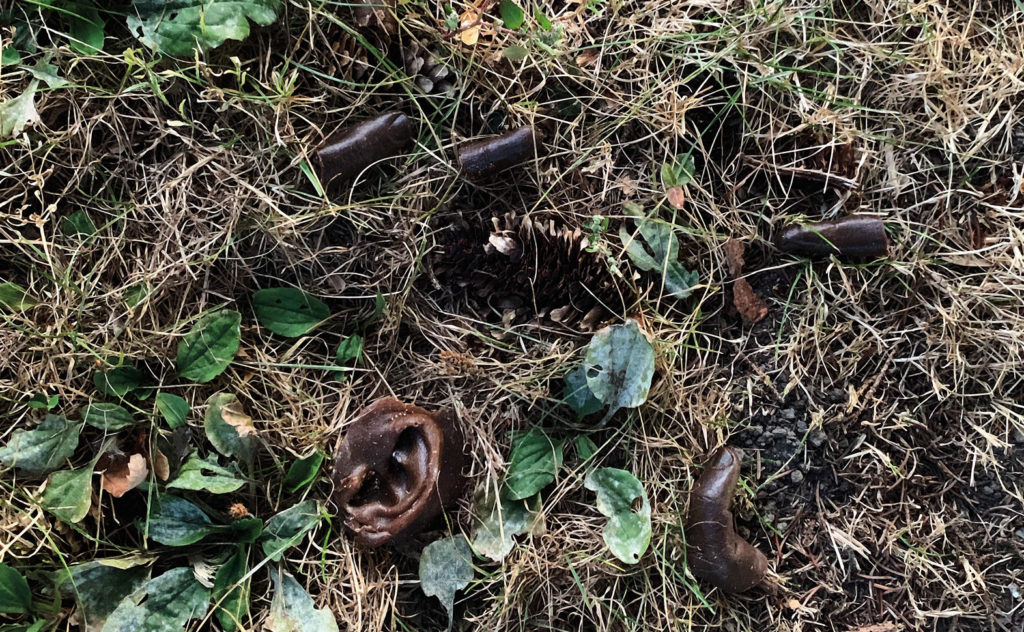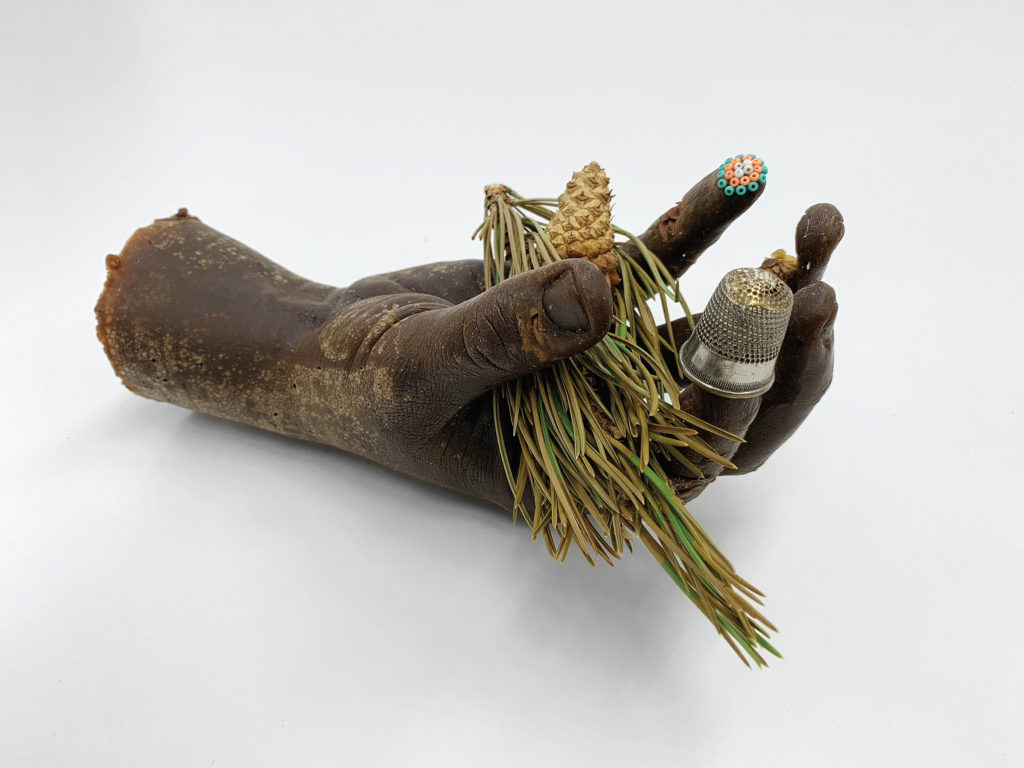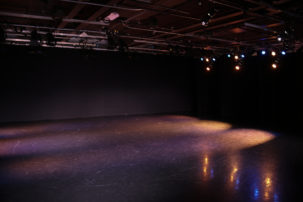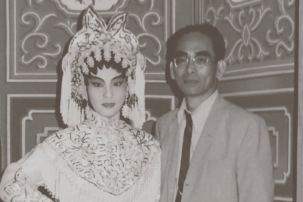Public space is one of opportunity—for collisions, sociality, brief moments of pause and occasional breaches of the separation between public and private that afford glimpses of intimacy. It envelops users and gathers people together in ways that reflect how particular spaces have been travelled within, through, toward, beyond. Public space is necessarily social, as it folds our individuality into its continual creation. Though highly visible, public space is also where much activity goes unseen. To me, poetry and other forms of creative writing, alongside literary analysis, offer strategies and opportunities to think about Indigenous gatherings in urban spaces in particular, through many forms.
My inquiry into the everyday began as a result of reading theories of rhythmanalysis—theories that argue how ideas of place are built by series of intricate and complex rhythms. This resonated with my personal experience of engaging the landscape as an artist and as a long-distance runner: both compel me to consider how rhythm can be used as a tool of oppression and also as its critical opponent, or antidote. I am very curious about insignificant moments and how they play a larger role in individual worlds colliding and intersecting and, furthermore, how these intersections are pulled into the creative work of artists and academics. Running has allowed me to appreciate and be amazed by the smallest of moments— sometimes alone, sometimes with others—but more importantly, to be amazed by how these moments form who we are and how we travel through the world. I am very lucky to be able to run; it allows me to see the world in a way that is quiet and separate from how the majority of the world sees me, which is as an artist, writer, academic, partner, daughter, friend and executive director, as well as a Coast Salish–Dene woman. We would be amiss not to associate how we, the general public, come together and pass through space with significant impact on artistic interventions, or even further, to examine how the possibility of creativity is formed from the seemingly insignificant moments of each of our lives.
Non-Indigenous scholars have conceptualized everyday life as though these ideas could be transferred to racialized bodies, when they often can’t be. Many theorists take up issues of space as concept, but without considering the politics of the land they are writing about, or how racialized bodies have to move through these lands differently. In two foundational texts by Henri Lefebvre, The Production of Space (1974) and Rhythmanalysis: Space, Time and Everyday Life (1992), urban space is social as much as it is material: “produced” through the “work” of everyday acts containing philosophical and embodied rhythms. Gaston Bachelard in The Poetics of Space (1957) and Jane Bennett in The Enchantment of Modern Life: Attachments, Crossings, and Ethics (2001) maintain links to the everyday, but for them the everyday is situated in the power of the mind to overcome the limitations imposed by the structures, perceptions and pretences that form so much of our daily lives under colonialism. For Bennett, this power lies in enchantment, whereas Bachelard finds it in the metaphor of home. Judith Butler and Nicholas Blomley both address politics in more explicit material terms. In Unsettling the City: Urban Land and the Politics of Property (2003), Blomley unambiguously addresses colonial and capitalist motivations through the distribution of owned property; by defining terms such as “dispossession” and “displacement,” Blomley grounds his argument in the historical and contemporary acts of structural racism that are absent in the other texts. In Notes Toward a Performative Theory of Assembly (2015), Butler examines the role of assembling in public spaces and particularly how the act of people coming together contributes to, and changes, the materiality of the space they occupy. She argues that every space is a political one. The most obvious absence throughout all these texts is any mention of place-specific responses to how the land itself plays a fundamental role in everydayness, in everyday experiences. What makes the everyday so intriguing for me is the simple capacity we have as humans to contribute to the rhythms of each other’s lives, and how we might reconsider our relationships to the lands we regularly cross.
vulnerable, unexpected relations
History has taught us truths of isolation and its wretched ability to distort and tear at the roots of built and nurtured values—isolation from community, isolation from language and voice, isolation from knowledge, isolation from the very idea of one’s self. To appear before and with others allows our very bodies to confront perceived absence. In challenging absence, we challenge fantasies that we have been wiped clean from these lands.
If the body is an assembly, how do all parts of this assembly appear? Can they all appear? From and within precarity in relation to what cannot be assumed, these assemblies wrap together as a field of unknowable moments waiting to be seen.
Appearance agitates invisibility. Vulnerability insists upon individuality of the body in light of its appearances, freed from absence.
I met artist Logan MacDonald a few years ago now. We were supposed to go to lunch together, but I had forgotten and was, as a result, very late. I ran into the restaurant frantic and not knowing what he looked like. When I finally sat across the table from him, we looked at each other and laughed as if we’d known each other all our lives. Since then, Logan and I have laughed our way through every space we have been in together. So I wonder how the small moments that have contributed to this beautiful friendship, to how we are able to laugh together so deeply, transgress how we move through the world and influence what we are able to create as a result. Aside from the uniqueness of our friendship, Logan’s work as an artist considers Indigenous and queer bodies in relation to the land we pass through every day, and it speaks to the simple yet complex curiosities of everyday existence. He questions how bodies are policed in public space, how we are surveilled on lands we once used for trade in sustainable ways, and how, if we were to go cut down a tree today in Trinity Bellwoods, or any other urban park, to make a basket, we would most definitely be arrested. Logan’s photographic work straddles various performative gestures, which are often intertwined or move swiftly from one form to the other. He places his body in such moments, and he leaves what might be interpreted as dismembered limbs, showing the absence of a body—or just absence more broadly. He spoke to me about learning more about being Mi’kmaq while also learning how to work with his degenerative hearing loss: How do you listen when you can’t hear everything being said? You learn to listen in different ways, through the body—and you laugh a lot louder.
The work of Stó:lo scholar Dylan Robinson (who is also my kind and generous PhD supervisor) has addressed many moments where public art practices have, importantly, shifted relationships to the built and natural environments they are made in. In particular, he presents public art by Indigenous peoples as negotiations with sovereignty and relationship to place. In a different way of challenging public space, scholar Mishuana Goeman, Tonawanda Band of Seneca, argues that literature by Indigenous women can work to reimagine colonial geographies and rewrite histories to reflect our distinct lives and experiences, particularly in her book Mark My Words: Native Women Mapping Our Nations (2013). Their work begins to break down the notion that space is fixed or imposed on its users, which means that users actually have immense power to shift its codes. With this knowledge Indigenous peoples have the power to reread and reassert our own presence in urban space, determining our movements through it as an active rather than passive act, prompting the possibility for new forms of navigation, resistance and community.
 Logan MacDonald, noduera / to hear in fragments (detail), 2019. Digital photograph.
Logan MacDonald, noduera / to hear in fragments (detail), 2019. Digital photograph.
It is, however, somewhat idealistic to believe that simply rereading how we act in and upon urban space can offer enough pushback against the magnitude of society’s structuring forces. Butler argues for a different but complementary theory of how space is built and engaged with through acts of assembling, in which gatherings of people change the nature of space. The interaction of bodies performing their collectivity (for example, through collective mourning, protest or celebration) confronts and challenges the very idea of what is public. Every space is a political one. Through this theory of assembly, Butler calls attention to the precarity and vulnerability of public space. In public we engage in the unknown, and with unpredictable outcomes. And because public space necessitates this unpredictability, we become connected through precarity. Notes Toward a Performative Theory of Assembly accounts for varying forms of privilege that allow ease in navigating public spaces, but it is still missing an important element: like much of Western theory, human-centricity informs Butler’s thoughts around who and what has the power to contribute to the politics of public space. Particularly important for my worldview, which is shared by many Indigenous peoples, is that land, animals and plants are also contributors to these assemblies, which Butler generally overlooks. While writing this, I was reminded of Sara Ahmed’s essay “A Phenomenology of Whiteness” (2007), which questions what situates whiteness and how everything is placed within and around the formation of whiteness institutionally, intentionally. Ahmed works to understand what non-white bodies are forced to navigate when working in a world that is not designed for their success. She gives an example using philosophers Edmund Husserl and Frantz Fanon, who both describe their orientation to specific objects that surround them as they write: while Husserl describes observing the desk at which he sits, and the family that is also part of the house through his own habitual knowledge, Fanon describes how we build relationships to objects while being spun through a racialized, white world. Our relationships to objects may shift because the pressures of oppression can outweigh our efforts to build our own surroundings through objects.
Theories of everyday life importantly make visible the small moments of how we exist and engage with the public spaces we navigate, but there is a need to push these theories to address what has not yet been addressed or has been missed. As we fall into rhythms of everyday life, ways of accentuating our intimate lives, such as reading, embodied poetics and daydreaming, might allow us to self-reflect parts of ourselves in the building of the public social spaces we navigate. Where does the marginalized body fit within the structures of our urban environments, structures that have been built against accommodating us? What is the role of land in the nature of everyday life? To overlook such an incredible energy is, to me, an oversight with substantial consequence, one that silences and plays into the illusion of invisible Indigenous bodies as being the continual (but silent) stewards of land. I want to recognize those who put themselves out into the everyday, to interrupt, to create and revolutionize, to show our histories, to rebuild a world filled with our art and histories.

 Logan MacDonald, monasthus / to touch soft wax, for hard bronze, 2019. Digital photograph.
Logan MacDonald, monasthus / to touch soft wax, for hard bronze, 2019. Digital photograph.






